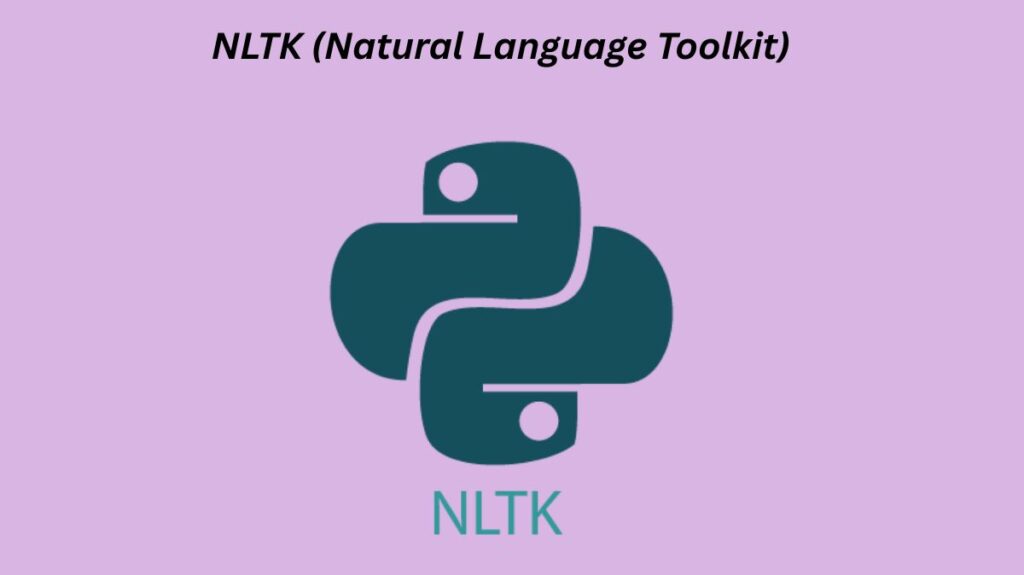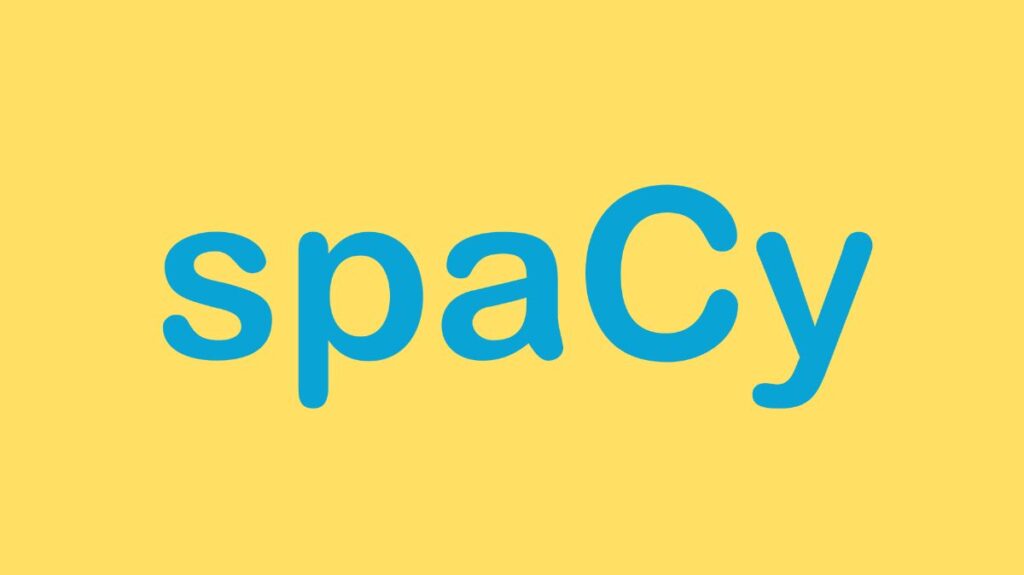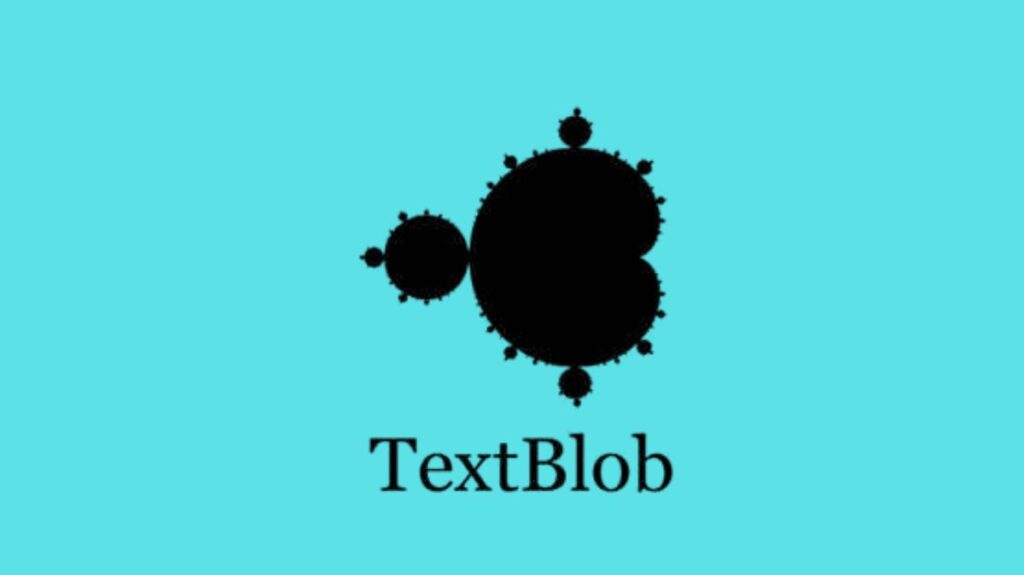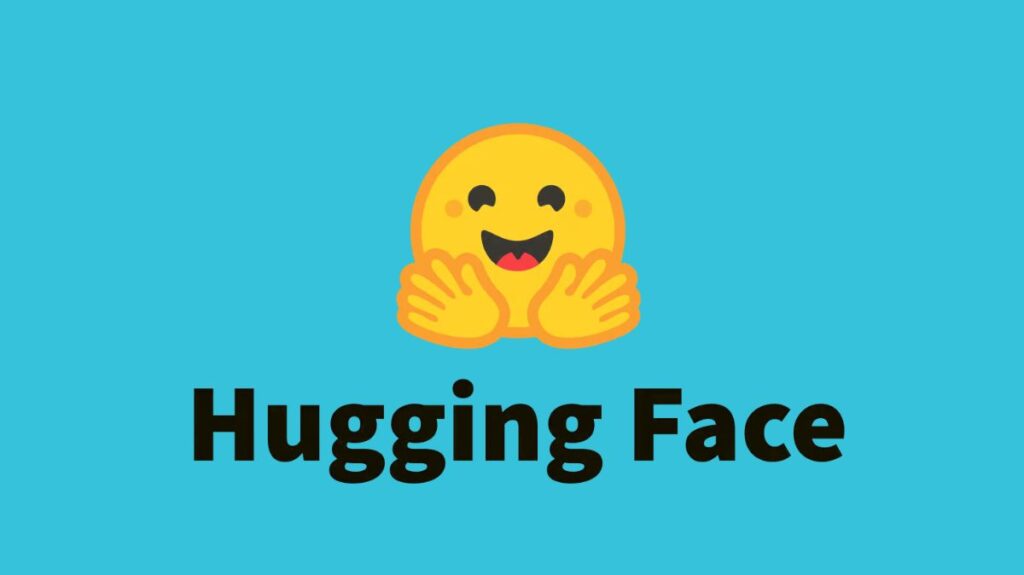Tokenization Libraries
Tokenization can be done with a variety of tools and frameworks. The sources mention the following:
Natural Language Toolkit NLTK Tokenization

The Natural Language toolbox is a popular and widely available open-source NLP framework and toolbox. The “mother of all NLP libraries” is a common term used to describe this essential tool.
Here is a thorough analysis of NLTK derived from the sources:
What it is: NLTK is a Python tool for natural language processing. Data, documentation, and a large amount of software are all publicly accessible. It offers a collection of resources and instruments for teaching computational linguistics.
History and Purpose: NLTK was first developed in 2001 as a component of a University of Pennsylvania course on computational linguistics. Since then, it has been utilized as a foundation for research projects and developed by a large number of contributors. By offering a user-friendly framework with considerable building blocks, it hopes to free users from laborious processing tasks and enable them to acquire useful NLP knowledge. Simplicity, consistency, and extensibility are among its design objectives.
Core Features and Modules: NLTK outlines a framework for creating Python NLP applications. For tasks like part-of-speech tagging and syntactic parsing, it provides standard interfaces, fundamental classes for encoding NLP-relevant data, and standard implementations that can be coupled to tackle complex problems.
In terms of tokenization, as we talked about, NLTK has tokenizers, such as the nltk.word_tokenize() off-the-shelf tokenizer and the nltk.tokenize.sent_tokenize tokenizer for sentences. Additionally, regular expression-based tokenization is supported.
Beyond tokenization, NLTK includes modules for a wide range of NLP tasks:
- Processing strings (tokenizers, stemmers, and sentence tokenizers).
- Part-of-speech (POS) tagging (backoff, Brill, HMM, TnT, n-gram, among others) Its POS tagging module relies heavily on the nltk.pos_tag() method.
- Entity Recognition by Name (NER). For NER, you can utilize ne_chunk from NLTK.
- Chunking (n-gram, named entity methods, regular expression)
- Classification (decision tree, k-means, EM, naive Bayes, maximum entropy).
- Parsing (chart, feature-based, unification, parametric, and dependent).
- Model checking, Lambda calculus, and first-order logic are examples of semantic interpretation.
- Metrics for evaluation (precision, recall, and agreement coefficients).
- Frequency distributions and smoothed probability distributions are examples of probability and estimate.
- Applications include WordNet browsers, chatbots, parsers, and graphic concordancers.
- Fieldwork involving linguistics (manipulating data in SIL Toolbox format).
- NLTK is also utilized for tasks related to Text Normalization, including lemmatization and stemming.
- Corpora and Lexicons Data Resources: NLTK includes a large number of text corpora, including online text, chat text, and annotated corpora, among other types of text. It offers uniform access points to lexicons and corpora.
- The Universal Declaration of Human Rights Corpus (UDHR), the Reuters Corpus, the Inaugural Address Corpus, and the Brown Corpus (which comes in both tagged and untagged versions) are a few examples of included corpora. Additionally, it has corpora for numerous languages.
- The CMU Pronouncing Dictionary, the Words Corpus (which is comparable to the Unix /usr/dict/words file), and Swadesh wordlists for cross-linguistic comparisons are only a few of the lexical resources (lexicons or wordlists) that are included in NLTK. Additionally, it contains WordNet, an English lexical database that contains synonym sets (synsets).
- Data packages including corpora and corpus samples are available for free download for study and education.
- Installation and Usage: The nltk.org website offers installation instructions and download URLs for NLTK, which is intended to be used with Python. The ‘book collection’ referenced in the sources is one of the data packages that you usually need to acquire when installing NLTK. After installation, you can import modules and begin text processing. For tasks like tokenization, NLTK is referenced in conjunction with other libraries like SpaCy and TextBlob. It is mentioned that NLTK and Pattern are the foundations of TextBlob.
- Relation to Other NLP Concepts: Most of the NLP activities that are addressed, such as text normalization, sentence segmentation, POS tagging, NER, parsing, and working with corpora and lexical resources, rely on NLTK. It is also combined with machine learning techniques. In order to understand how to utilize NLTK, the book “Natural Language Processing with Python” is the main resource.
- It is said that NLTK is a necessary tool that offers helpful Python libraries and explanations of strategies such as corpus interfaces and text normalization.
- It has a number of tokenizers, such as a commercial term tokenizer,
- The function word_tokenize converts a string into word tokens.
word_tokenize: Tokenizes a string into word tokens.
sent_tokenize: Tokenizes a string into sentence tokens.
WordPunctTokenizer: Tokenizes a string into word and punctuation tokens.
TweetTokenizer: Tokenizer designed specifically for tokenizing tweets.
- You can also use regular expressions with NLTK’s nltk.regexp_tokenize to gain more control over the tokenization process.
SpaCy Tokenization

One library for tasks involving Natural Language Processing (NLP) is called SpaCy.
This is what the history of SpaCy shows:
SpaCy is a Python package created especially for natural language processing (NLP) activities. It is regarded among data scientists as one of their preferred libraries for NLP implementation.
Capabilities: SpaCy offers reliable, precise, and optimized tagging methods, according to the sources. Its application to Named Entity Recognition (NER) is illustrated in more detail by an example. The ability of SpaCy to recognize many entity types in text, including “PERSON,” “ORGANIZATION,” “GPE” (Geopolitical entity), and “MONEY,” is demonstrated in this sample.
Usage: Examples of code for utilizing SpaCy are given in the sources, including how to load an English model (spacy.load(‘en’)) and process text to extract entities.
Installation: Conda install spacy is recommended as the first step in the installation process, and the models are downloaded using python -m spacy.en.download everything.
Context: Tokenization and other basic text processing tasks are discussed in relation to SpaCy and other NLP libraries like NLTK and TextBlob. The fact that TextBlob is based on NLTK and Pattern suggests that SpaCy is a unique substitute. As an additional toolbox, CoreNLP a Python wrapper for Stanford CoreNLP is also mentioned.
- One of the libraries that can conduct tokenization is SpaCy.
- It is sometimes mentioned in relation to Named Entity Recognition (NER) systems, which occasionally carry out tokenization on their own.
- More than 50 languages are supported with multilingual tokenization.
- Contextual tokenization with intelligent handling of uncommon or unfamiliar words.
- Tokenization that maintains emails, URLs, and emoticons as separate tokens.
- Simple modification to include new tokenization rules for domain-specific material.
- The advanced NLP features of spaCy, like as named entity recognition and part-of-speech tagging, are based on its tokenization.
Text Blob Tokenization

A Python module called TextBlob is used for a number of Natural Language Processing (NLP) applications.
The sources provide the following information on TextBlob:
Both NLTK and Pattern are cited as the foundation and purpose of TextBlob. When it comes to implementing NLP tasks, data scientists consider it to be one of their favorite libraries. That “certainly isn’t the fastest or most complete library,” nevertheless, is also mentioned in the sources.
Key Features: TextBlob’s application for a number of typical NLP tasks is illustrated by the sources:
Tokenization: TextBlob is capable of tokenization, which divides text into words.The output is displayed as a WordList. Alongside NLTK and SpaCy, it is mentioned as a tokenization library.
Spelling Correction: TextBlob’s.correct() function offers an easy method for correcting spelling. Words like “electrcity” to “electricity” and “langauage” to “language” are examples of corrections.
N-grams Generation: TextBlob is emphasized as a “mostly used” library for creating N-grams. The.ngrams(n) approach is applied, where n is the gram’s size (for example, n=1 for unigrams and n=2 for bigrams).
Noun Phrase Extraction: It is observed that the ability of TextBlob to extract noun phrases is crucial for analyzing the “who” in a sentence. After constructing a TextBlob object, this is accomplished by iterating through the.noun_phrases attribute.
Sentiment Analysis: A pre-trained sentiment prediction model is included in TextBlob. The.sentiment feature yields two metrics: subjectivity (a number between 0 and 1, indicating the degree of opinionation in the text) and polarity (a value between -1 and 1, indicating negative to positive sentiment). Examples demonstrate how to obtain these ratings for various reviews.
Installation: The pip install textblob is used to complete the installation process.
Context with Other Libraries: TextBlob is commonly cited as an alternative for text processing and natural language processing jobs, along with NLTK and SpaCy. Additionally, it is utilized in text processing instances in conjunction with NLTK modules (such as word_tokenize and PorterStemmer). As an independent toolset with strong tagging algorithms, CoreNLP is mentioned separately.
In summary Built on top of NLTK and Pattern, TextBlob is an approachable Python library that provides simple techniques for tasks including sentiment analysis, tokenization, spelling correction, N-gram creation, and noun phrase extraction.
Hugging Face Tokenization

Among the most well-known Python libraries for Natural Language Processing (NLP) applications is the Hugging Face Transformers library. The O’Reilly Media book “Natural Language Processing with Transformers” by Lewis Tunstall, Leandro von Werra, and Thomas Wolf focuses on it. Thomas Wolf is Hugging Face’s co-founder and chief scientific officer.
The library’s primary strength is its extensive collection of pre-trained transformer models, which are easily accessible. The flexibility to modify these models, which have already been trained on vast amounts of text data, for certain downstream NLP applications is a significant benefit. Even on smaller datasets, this approach frequently yields good results by letting users take advantage of the extensive language information they have already gained during pre-training.
Encoders, decoders, and encoder-decoders are the primary transformer designs supported by the Hugging Face library. Implementations of more than 50 distinct architectures are included, along with many well-known models from these categories, including:
Encoder-only models: BERT and its offspring, such as RoBERTa (a robustly optimized BERT pretraining technique), DistilBERT (a condensed, distilled form of BERT), ALBERT, and MiniLM, are examples of encoder-only models. Tasks using Natural Language Understanding (NLU) frequently employ them.
Decoder-only models: GPT (Generative Pre-trained Transformer) and models that resemble GPT, like GPT-Neo and GPT-J-6B.
Encoder-decoder models: The original Transformer design, T5 (Text-to-Text Transfer Transformer), and BART (a denoising autoencoder for pretraining sequence-to-sequence models) are examples of encoder-decoder models. Sequence-to-sequence activities, such as machine translation, frequently employ them.
Models for longer sequences: For longer sequences, BigBird is a model that uses a sparse form that scales linearly to meet the quadratic memory requirements of standard attention.
Multimodal Models: The library incorporates models such as Vision Transformers (ViT) for picture tasks and wav2vec 2.0 for Automatic Speech Recognition (ASR), demonstrating its versatility beyond text.
The library provides essential helper methods and classes that streamline the NLP workflow
Accessing Models and Data: It links users to the Hugging Face Hub, a database with a large number of pre-trained models and datasets. Using functions such as AutoModel For Seq2SeqLM.from_pretrained(), models can be loaded straight from the Hub or from local file systems. Effective data loading, processing, batching, and caching are made possible by the library’s close integration with the Hugging Face datasets library.
Tokenization: This deals with the subword tokenization techniques that transformer models employ. In order to load the particular tokenizer that corresponds to the selected pre-trained model, the library offers AutoTokenizer. This is essential because different models employ different vocabularies and techniques.
Model Loading and Customization: In order to load model configurations, classes such as Auto Config from pretrained() are utilized. Bert Pre Trained Model and other base classes make it easier to create bespoke models that inherit practical functions
Training and Evaluation: The library’s robust Trainer class manages saving checkpoints, streamlines the training cycle, and keeps track of performance indicators. TrainingArguments is the tool used to configure training arguments.
Data Handling for Training: Token classification and sequence-to-sequence modeling tasks require specific data collators, such as Data Collator For Token Classification and Data Collator For Seq2Seq, to properly manage batching and padding.
Standardised Outputs: Sequence Classifier Output for text classification and Token Classifier Output for token classification are two examples of task-specific output objects that models frequently return results in. These output objects standardize the structure of model outputs.
The Hugging Face Transformers library is demonstrated for implementing various NLP tasks, including:
- Text categorization.
- POS tagging, which is viewed as a token categorization issue.
- Question answering, particularly extractive quality assurance.
- Utilizing encoder-decoder models such as T, machine translation operates.
- Expanding the application of Visual Question Answering (VQA) and Automatic Speech Recognition (ASR) to new modalities.
Other tokenization tools and approaches mentioned include:
- HuggingFace Transformers is a versatile environment that may be used to build tactics like full block parallelization. As part of its ongoing development, the Hugging Face team offers community events aimed at enhancing the library and its associated ecology, such as datasets.
- The Stanford Tokenizer is one of the other tokenization tools and strategies discussed, as are tokenizers tailored to particular fields like sentiment analysis or Twitter.
- Some Named Entity Recognition (NER) systems have tokenization features built in.
- It is common practice to tokenize using deterministic algorithms based on regular expressions combined into efficient finite state automata, particularly for speed.
In summary Text splitting into tokens is a straightforward process, but the precise technique and the tokens that are produced can differ based on the language, the text’s complexity (such as punctuation, contractions, and unsegmented languages), and the needs of the NLP application that comes after. To overcome these obstacles, several libraries and tools provide distinct implementations.
